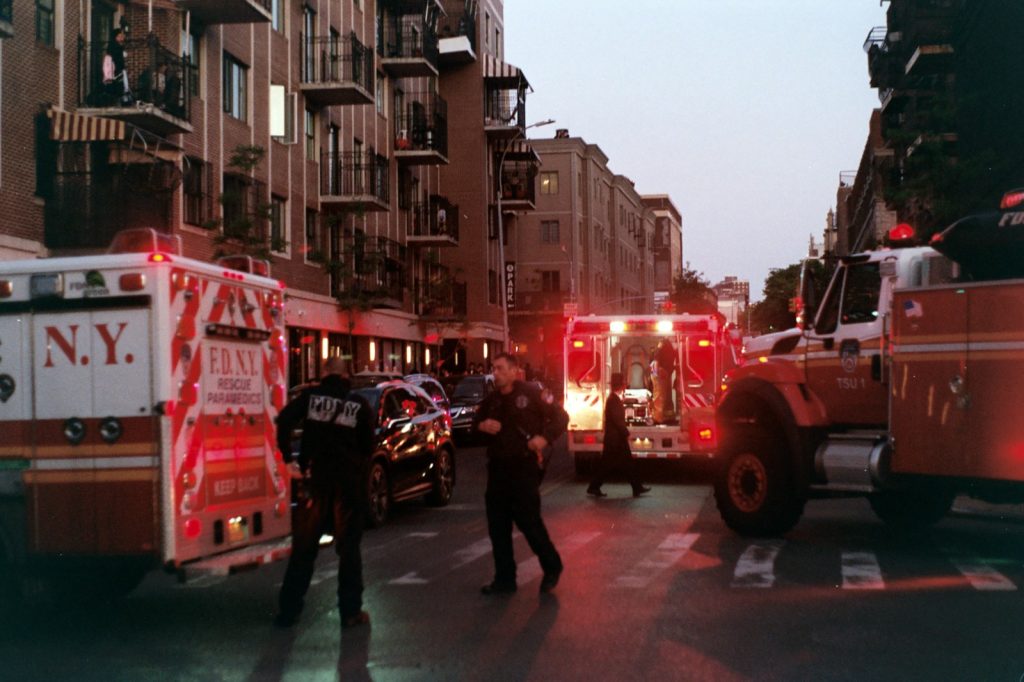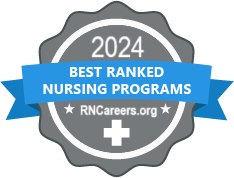Introduction Paramedic vs RN Scope of Practice
Differences between the paramedic and registered nurse (RN) scopes of practice impact how these professionals collaborate to deliver quality patient care. Gaining insight on paramedic vs RN scope of practice facilitates effective teamwork and ensures practitioners stay within their legal limitations. This article will examine key similarities and differences comprising the paramedic and RN standard scopes of practice
This article will examine key differences between the paramedic and RN scopes of practice. Clear differentiation of these overlapping yet distinct roles facilitates productive interprofessional collaboration. It also ensures healthcare workers practice only within their legal limits, maintaining high standards of patient safety.
We will explore specifics around permitted medical interventions, patient assessment abilities, autonomy to make care decisions, and differences in required education and credentials. Appreciating both the commonalities and specialized niche of these two roles paints a clearer picture of how collaboration between paramedics and RNs can elevate patient care.
Overview of Paramedic and Registered Nurse
A healthcare profession’s scope of practice delineates the permitted medical interventions, assessments, documentation, and other patient care tasks its practitioners are educated and authorized to perform. While overlap exists thanks to shared goals of outstanding emergency response and treatment, variations between the paramedic and registered nurse standard scopes of practice impact their practice. Grasping these nuances shapes how these professions collaborate day-to-day to deliver coordinated care focused on the patient’s best interests.
Paramedic Key Points
- Specially trained medical professionals who provide pre-hospital emergency care and transportation
- Originated from the emergency medical technician (EMT) role in the 1960s
- Education Pathway:
- Associate’s or bachelor’s degree paramedic program
- Includes advanced topics like pharmacology, cardiology, medical procedures
- Additional certifications available:
- Extrication
- Tactical medicine
- Critical care transport
- Associate’s or bachelor’s degree paramedic program
Registered Nurse Key Points
- Represent the largest segment of healthcare professionals
- Provide skilled nursing care and coordination across most healthcare settings
- Education Pathway:
- Associate’s Degree in Nursing (ADN) or Bachelor’s of Science in Nursing (BSN)
- Both prepare RNs to pass RN licensure exam
- Can pursue advanced certifications:
- Nurse practitioner (NP)
- Certified nurse-midwife (CNM)
- Certified registered nurse anesthetist (CRNA)
- Clinical nurse specialist (CNS)
- Associate’s Degree in Nursing (ADN) or Bachelor’s of Science in Nursing (BSN)
| Paramedics | Registered Nurses | |
|---|---|---|
| Care Setting | Primarily pre-hospital / emergency response | All settings including hospitals, clinics, homes |
| Foundational Education | Associate’s or bachelor’s paramedic diploma | ADN or BSN degree |
| Licensure | NREMT + state licensure | RN license via NCLEX exam |

Scope of Practice Paramedic vs RN
A healthcare profession’s scope of practice outlines the permitted medical procedures, assessments, and interventions its practitioners can legally perform based on their competencies and credentials. Clearly delineating the paramedic and RN scopes of practice facilitates effective collaboration and delivery of safe, coordinated patient care.
At the same time, appreciating the overlap in abilities allows capitalization on complementary skill sets. Both paramedics and RNs can:
- Obtain medical histories/chief complaints
- Conduct physical exams and vital sign evaluation
- Provide wound care and basic life support
- Administer oxygen and manage airways
- Interpret diagnostic findings
- Develop working diagnoses
- Provide patient education and counseling
Legal Frameworks Governing Scope
However, paramedics primarily deliver out-of-hospital pre-hospital emergency care under strict protocols, while RN practice allows more independent clinical decision making regarding complex care regimens across diverse settings.
The scope also differs legally between states. It is shaped by:
- State statutes & regulations:
- Determine medication administration, procedures, autonomy
- Medical oversight:
- Paramedic practice controlled by EMS medical director
- RNs supervised by chief nursing officer or collaborative physician
- Requiring physician approval:
- Many paramedic interventions require direct approval
- RNs can often autonomously adjust care regimens
Paramedic Scope of Practice
The paramedic scope encompasses advanced emergency treatment skills beyond a standard EMT’s abilities. Key aspects include:
EMT vs EMT-Paramedic Roles
- EMTs provide non-invasive interventions to stabilize patients:
- First aid, CPR, medical transport
- Some jurisdictions allow blood glucose checks, epinephrine, naloxone
- Paramedics perform advanced interventions:
- Administer wider range of drugs & IV fluids
- Interpret EKGs
- Perform intubation, cricothyrotomy
- Manual defibrillation
- Insert advanced airways
Skills Unique to Paramedic Practice
- In-Depth Patient Assessment
- Paramedics incorporate detailed physical exams assessing all body systems – far beyond just the chief complaint focused exam EMT training provides
- Life-Saving Procedures
- Cardiac resuscitation
- Surgical airways
- Chest decompression
- Intraosseus line insertion
- Medication Administration
- Over 40 emergency medications
- Includes narcotics & Rx stimulating heart function
Registered nurses (RNs) have a broad scope of practice that encompasses diverse care responsibilities across nearly every healthcare setting. They coordinate patient care, deliver treatments, provide education, administer medications, and operate as central caregiver figures responsible for managing comprehensive treatment plans. We will explore key aspects that differentiate RNs from LPNs, components of complex care management under the RN scope, and how specialty certifications can expand their authorized duties.
Registered Nurse (RN) Scope of Practice
- RN vs LPN Distinctions
- RNs have a wider range of permissible tasks
- RNs develop & manage patient care plans
- RNs delegate to and supervise LPN work
- Care Management Responsibilities
- Admit & discharge patients
- Review diagnostics & reconcile meds
- Change wound dressings & tubes
- Perform psychosocial assessments
- Medication Administration
- RNs have the broadest medication administration abilities
- Verify, dispense, and evaluate response to meds
- Monitor for interactions and adjust doses
- Specialty Certification Expands Scope
- School nurses dispense OTC meds
- Nurse practitioners diagnose & prescribe meds
- CRNA provides anesthesia in OR without supervision
Salary and Career Advancement
Emergency medical services are a growing field, though registered nursing still offers higher average pay, more varied work settings, and abundant opportunities to advance into prestigious and lucrative senior roles.
Salary Comparison
- Paramedics:
- EMTs – $35,000 average annual salary
- Paramedics – $39,000 average salary
- Nurses:
- LPNs – $48,500 average annual salary
- RNs – $80,000 average annual salary
Advancement Prospects
- Paramedics:
- Lead Paramedic
- EMS Educator
- Tactical Medic
- Flight Medic
- Nurses:
- Charge Nurse
- Nurse Manager
- Clinical Specialist
- Nurse Practitioner
- CRNA
- Healthcare Administrator
Differences Between Paramedics and Nurses
Paramedics and nurses both provide critical frontline patient care, but key differences in their standard scope of practice, typical work environments, and specialized skillsets cause these roles to complement rather than compete with each other. Appreciating their unique attributes facilitates effective collaboration.
- Practice Scope
- Paramedics: strictly governed by EMS medical director and protocols
- RNs/LPNs: more latitude to independently make judgements
- Care Settings
- Paramedics: unstable emergency calls, ambulance transport
- RNs: hospitals, clinics, long-term care facilities
- Skills
- Paramedics: resuscitation, field procedures, stabilizing trauma
- RNs: central caregiver for health maintenance, disease management
These differences cause the professions to shine in varying scenarios – paramedics saving lives rapidly on-scene while RNs prevent decompensation through diligent, hourly patient monitoring in hospitals. Recognizing their unique roles and abilities allows capitalization on respective strengths.
Collaboration Between Paramedics and Nurses
Paramedics and nurses collaborate in diverse environments across the care continuum to weave their complementary abilities into tightly coordinated patient care.
Prehospital
- RNs provide medical oversight guiding EMS protocol development
- Paramedics execute protocols, ambulance transport
- EMTs restock hospital supplies
Emergency Department
- RNs prepare specialized kits
- Paramedics provide handoff reports
- Together stabilize patients rapidly
Inpatient Care
- RNs manage intensive care treatment
- Paramedics share field intervention results
- Both ensure safe patient transitions
With clear insight into each other’s authorized duties and limitations, paramedics and RNs communicate effectively to optimize emergency response procedures and care transitions. They capitalize on overlapping competencies while ensuring the right provider is leveraged based on care needs and legal scope of practice.
Legal and Ethical Considerations
Paramedics and nurses have a legal and ethical obligation to understand their own scope of practice as well as that of those they collaborate with. Exceeding one’s credentials risks patient harm, professional censure, and legal penalties. However, seamless coordination requires insight into each other’s abilities.
Legal Implications
- Practicing outside scope endangers patients
- Carries penalties like license suspension
- Blurs liability responsibilities
Ethical Teamwork
- Openly communicate about credentials
- Seek guidance when unsure
- Respect each role’s specialty
Smooth paramedic and RN joint operations require continuously evolving awareness of regional legal frameworks. Simultaneously, upholding transparency and self-advocacy regarding limitations enables an ethical foundation for cooperation.
Paramedics and RNs represent overlapping yet distinct healthcare roles that collaborate closely across emergency response and ongoing care settings. While some responsibilities intersect, the broader legal scope of practice, care environments, specialized skill sets and average salaries differ significantly between the professions. However, meticulous insight into each field’s unique attributes and abilities facilitates safe, ethical interdisciplinary cooperation that keeps the patient’s wellbeing at the center.
References
[1] National Highway Traffic Safety Administration. National Emergency Medical Services Scope of Practice Model. https://www.ems.gov. February 2019.
[2] American Nurses Association. Scope of nursing practice decision-making framework. https://www.nursingworld.org. Accessed January 2023.
[3] Chapleau W. Paramedic vs. Nurse: What’s the Difference? https://www.healthline.com/. September 2021.
[4] U.S. Bureau of Labor Statistics. Registered Nurses. https://www.bls.gov. September 2022.
[5] U.S. Bureau of Labor Statistics. Emergency Medical Technicians and Paramedics. https://www.bls.gov. September 2022.
- About the Author
- Latest Posts
After graduating with a degree in English Literature from UCLA, Jeff published four editions of the World Wide Web Yellow Pages by Barnes and Noble, and several editions of the Best of the Web. He’s worked as an executive at both startup and mature companies including CareerPath.com and Microsoft. With nearly three decades of publishing and business development expertise, he now puts that experience to use operating RNCareers.org to help future nursing students get reliable information on registered nursing careers.








